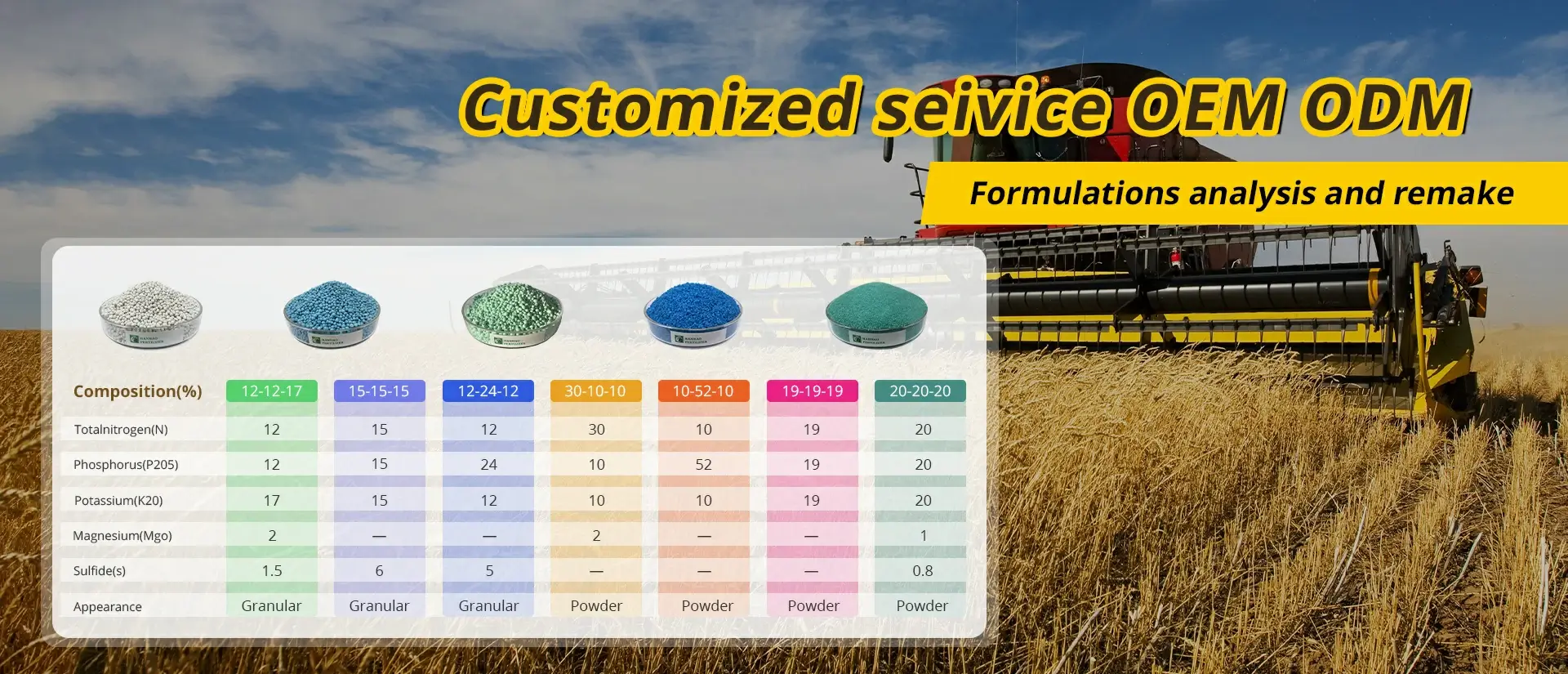
Nov . 01, 2024 06:10 Back to list
NPK Fertilizer Production and Benefits of 12-12-17 Formula in Agriculture
The Importance of NPK Fertilizers Spotlight on 12-12-17 Formulation
Fertilizers play a crucial role in modern agriculture, enhancing soil fertility and ensuring optimal crop yields. Among various types of fertilizers, NPK (Nitrogen, Phosphorus, and Potassium) fertilizers stand out for their balanced nutrient composition. One such formulation gaining traction is the 12-12-17 NPK fertilizer, which features 12% Nitrogen, 12% Phosphorus, and 17% Potassium. This specific blend is particularly beneficial for various crops and is widely manufactured by numerous factories across the globe.
Understanding NPK Composition
The numbers in the NPK formulation indicate the percentage of each macronutrient present in the fertilizer. Nitrogen (N) is vital for vegetative growth as it promotes leaf development, making it essential for leafy vegetables and grasses. Phosphorus (P) plays a significant role in root development, flowering, and fruiting, which is critical for fruits and flowering plants. Potassium (K), on the other hand, is instrumental in water regulation, disease resistance, and overall plant vigor. The unique combination of 12% N, 12% P, and 17% K in the 12-12-17 formulation offers a well-rounded nutrient profile that supports both development and yield.
Benefits of 12-12-17 NPK Fertilizer
The 12-12-17 NPK fertilizer formulation is particularly effective for crops that require balanced growth, especially during critical growth stages. For instance, crops like tomatoes, peppers, and potatoes benefit significantly from its rich potassium content, which promotes healthier fruit development and increases resistance to diseases.
Moreover, the fertilizer is designed to address the nutrient needs of a variety of soil types. Many agricultural regions face nutrient deficiencies that hinder crop productivity. The balanced ratio in the 12-12-17 formula helps mitigate these deficiencies, ensuring that plants receive the required nutrients in appropriate quantities.
npk fertilizer 12-12-17 factories

Using NPK fertilizers like 12-12-17 also enhances soil health. It not only replenishes nutrient levels but also improves soil structure and fertility over time, fostering a thriving ecosystem for beneficial microorganisms.
The Manufacturing Process
The production of 12-12-17 NPK fertilizer involves several steps, notably the sourcing of raw materials, blending, granulation, and packaging. Factories that produce this fertilizer typically source high-quality raw materials to ensure the effectiveness of the final product. The blending process is critical, as it ensures that the nutrients are evenly distributed throughout the fertilizer granules, providing homogeneity and consistent application.
Once blended, the mixture is granulated to form small particles, which are easier to handle and distribute. Finally, the product undergoes quality assurance testing before being packaged for distribution to agricultural markets worldwide.
Conclusion
In conclusion, the 12-12-17 NPK fertilizer is a powerful tool for farmers looking to enhance crop yields and maintain soil health. Its balanced nutrient formulation, high potassium content, and versatility make it suitable for a wide range of crops, particularly those that are nutrient-demanding. As the agricultural sector continues to evolve, the importance of high-quality fertilizers like 12-12-17 cannot be overstated, ensuring that we can meet the food demands of a growing global population.
-
Premium 10 10 10 Fertilizer Organic for Balanced Plant Growth
NewsJul.29,2025
-
Premium 10 10 10 Fertilizer Organic for Balanced Plant Growth
NewsJul.29,2025
-
Premium 10 10 10 Fertilizer Organic for Balanced Plant Growth
NewsJul.29,2025
-
50 Pound Bags of 13-13-13 Fertilizer for All Plants – Bulk & Organic Options
NewsJul.28,2025
-
High-Efficiency 15-30-15 Granular Fertilizer for Healthy Crops
NewsJul.28,2025
-
15-30-15 Granular Fertilizer for Optimal Crop & Lawn Growth
NewsJul.27,2025
